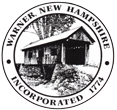Sugar Maples
Who discovered how to tap maple trees for sugar?
Following the ice age, as glaciers melted and the tundra became forest, the indigenous people who lived here discovered how to tap the forest’s maple trees to make sugar. Abenakis designed wooden spiles to drip sap into birch bark baskets and used clay or soapstone pots to boil sap into sugar. Only after they arrived here did Europeans learn this technology. In 1722, a Jesuit missionary, Sebastien Rasle, described the Kennebec Abenaki’s sugar-making process in a letter to his nephew: “There is no lack of sugar in these forests. In the spring the maple-trees contain a fluid resembling that which the canes of the islands contain. The women busy themselves in receiving it in vessels of bark, which it trickles from these trees; they boil it, and obtain from it a fairly good sugar.”
The Abenaki word for when winter turns into spring is “Sogalikas,” meaning the time of maple sugar making. Here in Nd’akinna, the Abenaki’s homeland, Native Americans and many others still partake in this sweet, seasonal tradition.
Source:
Alexander Cotnoir, “Sugaring in Wabanahkik (Land of the Dawn): An Abenaki History of Maple,” Audubon Vermont, March 22, 2021.
https://vt.audubon.org/news/sugaring-wabanahkik-land-dawn
